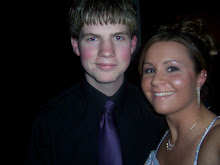Our "experiment" reminded me much of something I had done in elementary school. I believe that it was in the fifth grade. What we did was place four different genres of music around the room: Jazz, classical, country, and pop. We were to do our assignment while listening to the four types of music playing at the same time, and write about what we heard the most.
As it turned out, the results were almost tied on what was heard. About half the class heard the music that was closest to them, and the other half heard the type of music they like better. The two or four people in the middle of the room heard what is constituted as white noise and were able to space it out. They were the ones whom completed the assignment first and best due to the fact that they didn't have the distraction of the ability to distinguish music.
While this wasn’t quite the same experiment we did in English, there were the similarities. There were many more differences, though. For one, in fifth grade, we didn’t have a crazy instructor pacing around the classroom, checking everything, and touching the knobs and dials. We also had the same type of music player for all for types, because that was part of the control. In English, there were no controls, only variables, which creates a very horrible experiment. When you have a full stereo and a dinky CD player, you are bound to have volume problems. Everybody had to crank their music, and I had to turn mine down. A final difference was that everybody in fifth grade was an equal distance from the music player. The people who were closest to the music player were all the same distance away from it, as were the people who were furthest away from the player.
| | | MUSIC PLAYER | | |
| | DESK | DESK | DESK | |
| MUSIC PLAYER | DESK | DESK | DESK | MUSIC PLAYER |
| | DESK | DESK | DESK | |
| | | MUSIC PLAYER | | |
